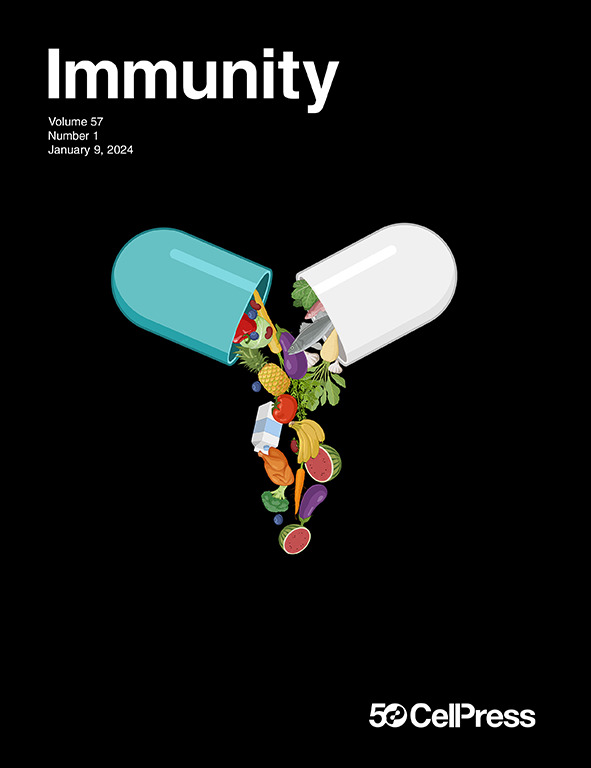循环调节性T细胞通过双调节蛋白介导胸腺损伤后的再生
IF 25.5
1区 医学
Q1 IMMUNOLOGY
引用次数: 0
摘要
与疾病或癌症治疗相关的胸腺损伤减少了T细胞的产生,使患者更容易受到感染和癌症。在这里,我们研究了调节性T (Treg)细胞在胸腺再生中的作用。不同急性损伤模型胸腺Treg细胞频率增加。Treg细胞的缺失损害了胸腺再生,同时影响胸腺细胞室和基质细胞室;Treg细胞过继移植可促进再生。循环Treg细胞的扩张,而不是组织常驻或最近的胸腺迁移,解释了这种增加,使用异种和过继转移模型可以看到。对循环Treg细胞的单细胞分析显示多种再生因子的表达,包括细胞因子双调节蛋白。这些Treg细胞中双调节蛋白的缺失会损害受损胸腺的再生。我们在人类胸腺中发现了类似的CD39+ICOS+ Treg细胞群。我们的发现指出了解决衰老和治疗诱导的免疫抑制的潜在治疗途径。本文章由计算机程序翻译,如有差异,请以英文原文为准。

Recirculating regulatory T cells mediate thymic regeneration through amphiregulin following damage
Thymic injury associated with disease or cancer treatment reduces T cell production and makes patients more vulnerable to infections and cancers. Here, we examined the role of regulatory T (Treg) cells on thymic regeneration. Treg cell frequencies increased in the thymus in various acute injury models. Depletion of Treg cells impaired thymic regeneration, impacting both the thymocyte compartment and the stromal cell compartment; adoptive transfer of Treg cells enhanced regeneration. Expansion of circulating Treg cells, as opposed to that of tissue resident or recent thymic emigrants, explained this increase, as seen using parabiotic and adoptive transfer models. Single-cell analyses of recirculating Treg cells revealed expression of various regenerative factors, including the cytokine amphiregulin. Deletion of amphiregulin in these Treg cells impaired regeneration in the injured thymus. We identified an analogous population of CD39+ICOS+ Treg cells in the human thymus. Our findings point to potential therapeutic avenues to address aging- and treatment-induced immunosuppression.
求助全文
通过发布文献求助,成功后即可免费获取论文全文。
去求助
来源期刊

Immunity
医学-免疫学
CiteScore
49.40
自引率
2.20%
发文量
205
审稿时长
6 months
期刊介绍:
Immunity is a publication that focuses on publishing significant advancements in research related to immunology. We encourage the submission of studies that offer groundbreaking immunological discoveries, whether at the molecular, cellular, or whole organism level. Topics of interest encompass a wide range, such as cancer, infectious diseases, neuroimmunology, autoimmune diseases, allergies, mucosal immunity, metabolic diseases, and homeostasis.
 求助内容:
求助内容: 应助结果提醒方式:
应助结果提醒方式:


